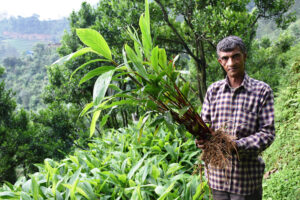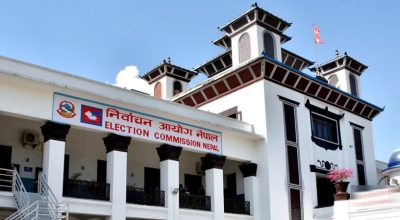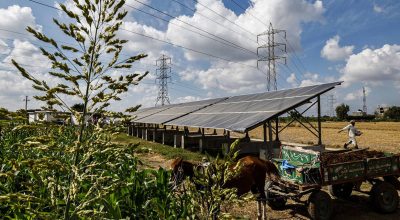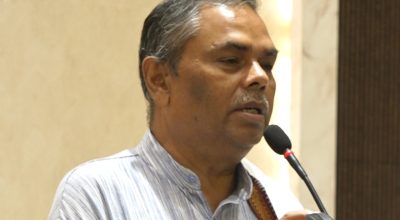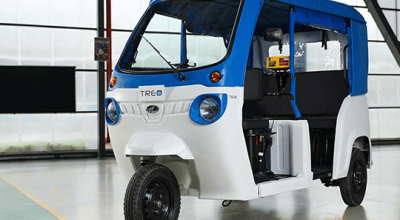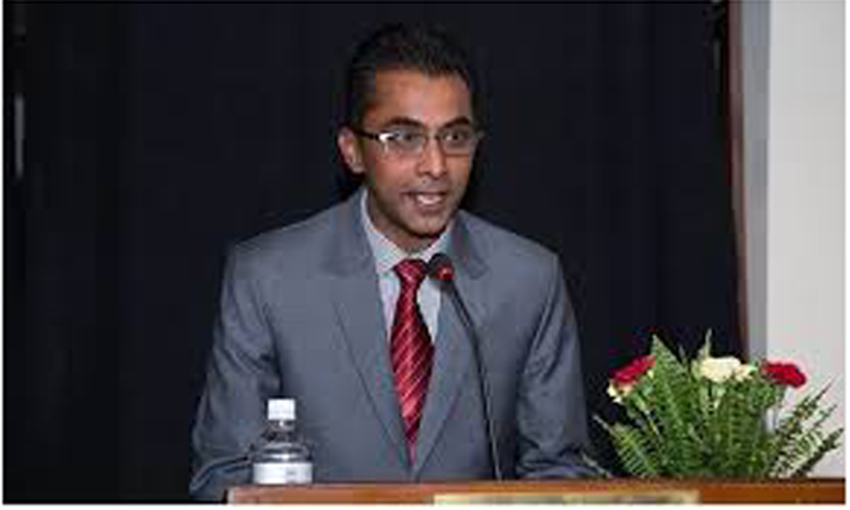
Professor Doctor Rajiv Kumar Jha has been teaching medical sciences in a university in China for about two decades since he did Ph.D. and then postdoctoral in minimizing the outbreak of gall bladder cancer from a Chinese university. China’s Shaanxi provincial government has established ‘China Nepal Friendship Medical Research Center of Professor Rajiv Kumar Jha’ in Xi’an Medical University in honour of Prof. Jha. Founded five years ago, the research center conducts studies on cancer and facilitates exchanges of medical experiences between Nepal and China. Prof. Jha has been a visiting medical professor in different universities in China.
Prof. Jha has also been involved in promoting bilateral relations including the people to people relations between the two neighbours, Nepal and China. He has talked about COVID-19 in Nepal, recent political developments including the dissolution of the House of Representatives in Nepal and their impact on relations with China. Excerpts:
Some political parties have announced demonstrations and rallies against the dissolution of the House of Representatives (HoR). Will not such rallies result in the disastrous spread of the deadly virus?
Of course, it will. The sacred mantra of controlling the virus is social distancing, wearing a mask, hand washing at regular interval,s and sanitizing. These are the WHO standard practice as well. We are still in a vulnerable situation, and large crowds may ignite another round of COVID-19 infection. In Nepal, nearly 1900 people have already died, and cases of coronavirus infection is increasing. In such a grave situation, all the political parties and organizations, and individuals must think several times before joining such demonstrations or protests.
You have stayed in China for over two decades and seen the relationship between the two countries develop. Will new political developments in Nepal have any impact on Nepal-China relations?
I do not think there will be much change or shift in Nepal-China relations. China has a policy of non-interference in any country’s internal matters. We are both friendly countries. China has always supported Nepal’s endeavor to develop and China has worked together with Nepal’s governments. Nepal and China have built a firm and robust relation and agreed to work together on many fronts. China has also shown great interest to support Nepal in her development efforts, like roads, trans-Himalayan railway.
How will the move of Prime Minister KP Sharma Oli to dissolve the House of Representatives (HoR) impact the public aspirations for political stability in Nepal?
Prime Minister KP Sharma Oli may have a broad vision for political stability in Nepal. He has repeatedly said that he had to face many different challenges from leaders of his own party. If so, in such a grave situation, no Prime Minister can run a government smoothly. It was a hard, but inevitable, choice for Prime Minister Oli in times of COVID-19 pandemic. Ultimately, he has decided to test himself and face election, which itself is a democratic exercise. However, the case is in the Supreme Court, and we have to wait for some time.
You were in Nepal when the number of cases of COVID-19 was increasing alarmingly despite nationwide lockdown to stem the virus spread. As a professional health researcher, how do you assess the government response to the COVID crisis and the present situation of Nepal that the spread of virus has subsided?
Like most of the countries of the world, Nepal was also badly affected by COVID-19. No doubt, Nepal is a third world developing country and the present pandemic has terrified even the developed nations.
With regard to the government response to this kind of pandemic, I would say Nepal’s response was understandable. However, better planning and management of home isolation and contact tracing was lacking. I think it’s better to work towards controlling COVID-19. We have now learnt many traits and nature of COVID-19 as compared to first detected in China. Therefore, we have to focus on the utmost utilization of treatment methods at home, isolation centers, or home isolation.
The most important issue is the confidence that we garner to tame pandemic. It is necessary to further train and motivate frontline workers — doctors, nurses and health workers — mentally and psychologically. They should be equipped with resources. All forms of the arrangement, including that of personal protective equipment (PPE), should be made available for them. Keeping the infected or those suspected in the isolation or quarantine centers is a good step.
What we need now is disseminating positive information that can boost people’s confidence, like that of China. Psychological fear is very harmful. We should know that over 80 percent of COVID-19 patients recover without any particular medication. The rate of death due to COVID-19 around the globe is no more than 3 percent. While disseminating information and views, we should consider whether such information affects the infected negatively or not. The focus must be on infected persons that they do not transmit the virus to others. Several studies have shown that novel coronavirus severely affects those who have a weak immune system, elderly and underlying health conditions. Those who have courage — “I can beat the virus” — can really defeat it within 14 days or so.
With the number of infected going down in Nepal, almost all sectors have been opened, and there is still a risk of another outbreak. To avoid such a situation, all the people need to follow health safety measures strictly and behave that threat of the novel coronavirus is still around unless effective anti-COVID immunization is completed.
While the cases of infection of the novel coronavirus were first detected in Wuhan of China, the country won its battle against the contagion within a few months but Nepal is still facing the risk. Would you share China’s success in containing the virus spread that can be useful also for Nepal?
China’s handling of the novel coronavirus was quite extraordinary and effective. In the beginning, the western world, particularly USA, criticized it. You may as well have heard that the US President Donald Trump even remarked that America was not made to shut down. However, many US States did have to opt for lockdown. Many US doctors and experts have repeatedly suggested for lockdown containing the virus, which would have saved the lives of some 50,000 people who succumbed to infection in New York City alone.
China successfully imposed a stricter lockdown in time to prevent the spreading of the deadly virus. It does, however, not mean that shutdown in itself is a treatment. It is just the first step. Along with lockdown, China intensified public awareness, contact tracing, mass testing, identification of the infected, isolation, and treatment. This is how China worked to contain the contagion. Wuhan was the hotspot or epicenter where more than four thousand people died. In efforts to contain the virus in Wuhan, the entire country had united, a large number of medical and other staff mobilised to serve people in need. Even President Xi Jinping instructed to all state apparatus to mobilise, with a single goal of defeating the virus. He himself visited Wuhan and inspected all efforts there.
When coronavirus attacked the Chinese manufacturing city of Wuhan, the people of China were preparing to celebrate their annual Spring Festival. Many were coming home from cities and abroad. Almost all universities and schools remained closed and the mobility of the people was at its all-time high. At such a time of highest public mobility across China, novel coronavirus exploded in Wuhan on January 23, 2020. The outbreak pushed the celebration of the Chinese New Year to the following year. On the other hand, some western countries started to label the virus as Wuhan or Chinese one with a view to humiliating China.
Chinese scientists and doctors immediately realised that the novel coronavirus was a family of SARS and its nature was fast spreading, and equally dangerous for human health. There was no option, but to introduce lockdown. The provincial government immediately announced lockdown, considering Wuhan as the epicenter, in many provinces and cities including Beijing. One case was detected in the Tibet Autonomous Region too that borders Nepal. Some countries operated chartered flights to evacuate officials of their embassies or stranded citizens in China.
Had other countries adopted the Chinese model of virus containment, they may have saved many lives and return normalcy quite earlier. It is all because of mishandling, chaos and negligence that contributed to the ferocious form of the virus as it was seen in Spain, Italy, the US and many other countries. It is obvious, the main reason China got success was the way it broke the chain of human-to-human contact during the outbreak.
Hospitals with advanced equipment and skilled human resources were built almost overnight in Wuhan while thousands of health professionals came to Wuhan for treatment of the patients. Health workers visited each home/flat in Wuhan to collect swabs for testing while even those people who did not suspect themselves of having contracted the virus came for swab collection for testing. People stayed in-home quarantine in the exemplary discipline. These are some of the reasons that made China a successful country to contain the virus.
We hear that China used technology and mobilised human resources in a successful way. How much was it helpful?
China has proved and showed its strength to contain pandemic. China had recently successfully controlled the deadly SARS virus by using technology and human resources. The experience and confidence level helped China to manage novel coronavirus as well. The firm will power of the leadership to face the pandemic, availability of resources and public support are the most important aspects of the success China got in the battle against the novel coronavirus infection.
Immunisation or use of vaccine against COVID-19 has started in different countries including China. In your opinion, when Nepal will get vaccine?
We have heard many different treatment methods available now. However, no method was perfect and complete. Plasma therapy was one option. Likewise, remdesivir and hydroxichloroquine were also applied. Scientists and pharmaceutical companies, including of China, have been testing vaccines. Recently, Pfizer and BioNTech, Moderna and Sputnik V vaccines have come up with new hope. But, Chinese vaccine SinoPharm’s CoronaVac and other vaccines are also in the final stage of clinical trials. They have shown good results, and cheaper as compared to others, and easily transportable.
In my view, Nepal can get vaccines easily from China. However, the Government of Nepal must believe in the Chinese vaccine. The UAE, Brazil, Mexico, Indonesia, and many other countries have already launched Chinese vaccine. Why not Nepal? It’s a big question. Nepali leaders and concerned health authorities in Nepal must think over it, and decide quickly.
What Nepal can do to contain the virus?
A Nepali saying goes, ‘save a life in the time of mad rush, grain seed in a time of famine.’ We should put this into practice. We have no option but to be safe from virus, adopt nine steps that China adopted, which I reiterated above.
It is also a good time for the maximum utilization of three tiers of government that we have at federal, provincial and local levels. We can win the battle against virus when there is coordination among the government agencies, frontline health workers, and others. They need encouragement, incentives, and very essential equipment like PPE from the government. People also need to feel that the government is working hard and doing its best. When every citizen feels that the government is working hard for the sake of the people, their confidence is boosted and it helps fight back the virus. This was vivid in China. A large number of human resources poured into Wuhan in a very short period of time with the spirit of fighting against COVID-19. Hundreds of frontline workers even lost their lives, but thousands continued to serve people with dedication. After they succeeded to control the virus in Wuhan, those dedicated and experienced team of health professionals dispersed in China and even went abroad for treatment.
You were reported in the Nepali media as being active in the distribution of medical materials during your stay here. How did you spend your time here?
During my stay in my home country, I utilized the leave to continue my research on how any medicine can be used as therapy for curing the novel coronavirus infection. This research is a seasonal grant or fellowship from the government of the People’s Republic of China. China has centralized such grants to conduct special research on coronavirus. I have to complete the research within a year, which is entitled as central government research fund for corona.
During my stay, there were different types of assistance from China to Nepal and I distributed them to different regions, communities and individuals based on their needs. For instance, being the Chairman of Trans Himalayan Society, I myself distributed medical materials, food and financial assistance to the needy.
However, let me share some uneasy experience in this aspect here. Many countries exempt customs charges for those imported things meant for free public distribution in time of crisis. Countries honour those who extend emergency help at critical times. We had imported health safety materials including face masks and sanitisers from China so as to distribute them free of charge to government agencies and other organisations. They got stuck for a long time at Rasuwagadhi border point. We had to pay customs tax as if we had imported them for commercial purposes. Those things were the materials sent to us as help from Chinese friends. We paid the tax, but we got no receipt for the payment we made. I got dismayed due to the kind of mechanism we have. We have a difficult situation here in Nepal to bring in things even for the help of the needy. (Source: The Rising Nepal)





